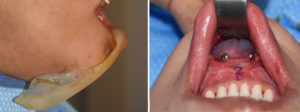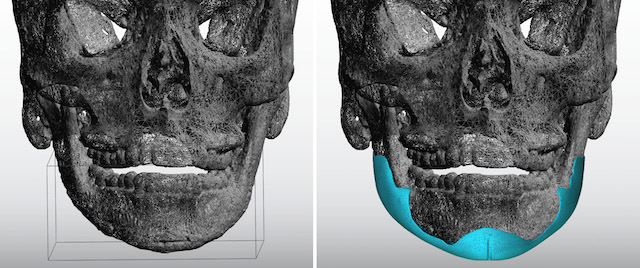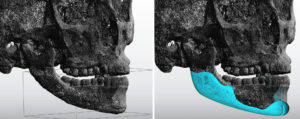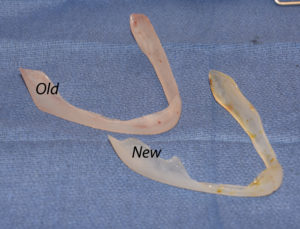Background: One of the most popular facial reshaping procedures in the world, by patient numbers, is V-line surgery. This is a lower facial reshaping procedure to reduce the size of the jaw and give it more of a V-shape in the frontal view. It is done by two different types of bone reduction techniques, jaw angle/line ostectomies up to the mental nerve and a T-shaped chin osteotomy with a midline ostectomy. Together the entire jaw is reshaped in a more narrow and tapered appearance.
While V-line surgery can be effective for many patients, like any type of facial reshaping procedure, it can be overdone or perceived as such. The amount of jaw reduction can be more than the patient anticipated or, after looking at the result for awhile, come to the conclusion that they liked what that had before better. It is certainly true in my experience that no matter how much computer imaging is looked at beforehand or regardless of how much one thinks they want such a fundamental change, one may experience ‘surgical regret’ later.
Reversingm in full or partially, V-line surgery can only be done by a custom jawline implant. This is the only unified one-piece jawline augmentation method that offers the ability to peroperatively determine all dimensions of the implant. In V-line surgery reversal the key question is whether it should he fully reversed or only a partial reversal should be designed.



It is difficult to always predict how much jaw reduction will be satisfactory or excessive. But given how the jaw angle ostectomy is performed, one should be cautious with its use in non-Asian patients who can have naturally smaller jaws by comparison. But in designing a custom jawline implant for V-line reversal, it is usually better to think of subtotal reversal and not a complete one. There is a reason the patient had the first procedure so it is best to design a ‘halfway’ reversal. Knowing what their preoperative lower jaw looked like can be invaluable but such radiographic information is not always available.
Case Highlights:
1) V-line surgery is a total jawline reduction procedure based on jaw angle osteotomies and chin narrowing osteotomies.
2) Unlike any type of facial bone reshaping procedures, some patients may find the outcome excessive and desire some or all of their jaw/chin bone replaced.
3) A custom jawline implant can be designed to restore some or all of the bank removed in V-line surgery.
Dr. Barry Eppley
Indianapolis, Indiana






